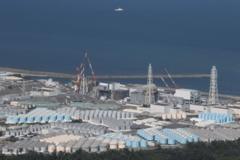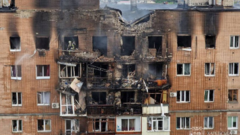In a shocking incident, a low-cost drone struck the Chernobyl nuclear power plant, damaging the steel shield built to last a century. Experts expressed their disbelief as the event unfolded last month, showcasing the escalating risks associated with warfare in sensitive areas.
Drone Strike Breaches Chernobyl Shield: Experts React

Drone Strike Breaches Chernobyl Shield: Experts React
An unexpected drone attack punctured the protective shell of the Chernobyl nuclear site, raising concerns over safety amid ongoing conflict.
Last month, the Chernobyl nuclear power plant, the site of the world's worst nuclear disaster, faced a severe breach when a drone strike compromised its protective steel shield, designed to withstand numerous potential disasters. This attack, performed with a Ukrainian air defense unit, led to a considerable fire that persisted for weeks, startling both experts and officials.
The shield, an engineering marvel weighing nearly 40,000 tons, was completed in 2016 as a protective measure over Reactor No. 4, constructed with the utmost care after rigorous safety analyses by a coalition of over 45 countries. Eric Schmieman, a former senior technical adviser on the project, detailed the extensive precautions taken, which unfortunately excluded the possibility of wartime aggression.
On February 14, a high-explosive Shahed 136 drone, reportedly costing around $20,000, was said to have been responsible for the hole it created in the shield. While Ukrainian officials maintained that this attack was a deliberate act by Russian forces, the Kremlin has denied any involvement.
The initial blaze was swiftly controlled, but the waterproof membrane situated within the structure caught fire and smoldered for nearly three weeks. Emergency teams had to resort to complex measures, including climbing equipment to locate and extinguish the hidden flames, risking further damage to the delicate confinement meant to safeguard against corrosion.
This incident has reignited discussions about the often-overlooked threats posed by military actions in regions housing critical infrastructure, highlighting the inadequacies of planning for scenarios involving contemporary warfare.























